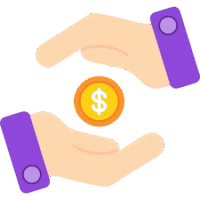Managing and controlling debt is vital for maintaining financial health and ensuring a stable future. When debt is not managed appropriately, it can quickly spiral out of control, leading to financial distress.
Here’s a comprehensive guide on how to control and reduce your debt:
1. Assess Your Debt
- List Everything: Make a detailed list of all your debts, including credit cards, loans, mortgages, and any other obligations. Note down the balance, interest rate, and monthly payment for each.
- Understand Your Total Debt: Summing up everything gives you a clear picture of what you owe.
2. Budget and Prioritize
- Create a Budget: Account for all sources of income and all monthly expenses. Dedicate a portion of any surplus money specifically for paying off debt.
- Prioritize Your Debts: Pay off high-interest debts first, as they cost you more over time. This approach is commonly known as the “avalanche” method. Alternatively, the “snowball” method suggests paying off small debts first to gain momentum.
3. Limit New Debt Accumulation
- Stop Unnecessary Spending: Avoid adding new charges to your credit cards. If needed, leave them at home when you go out.
- Avoid Taking New Loans: Unless absolutely essential, refrain from incurring new debt until you’ve gained control over your current debt.
4. Negotiate Interest Rates
- Contact Creditors: Reach out to your credit card companies and loan providers. Ask if they can reduce the interest rate on your balances. Even a small rate reduction can save a lot over time.
5. Consolidate Debts
- Personal Loans: A personal loan can combine multiple debts into a single monthly payment, often at a lower interest rate.
- Balance Transfers: Transfer high-interest credit card balances to a card with a lower interest rate. Some cards even offer promotional 0% APR periods.
6. Pay More than the Minimum
- Accelerate Repayment: Paying only the minimum amount prolongs the debt and results in higher interest costs. Whenever possible, pay more than the minimum.
7. Create an Emergency Fund
- Start Small: Aim for a modest emergency fund initially, such as $500 or $1,000.
- Grow Over Time: Gradually increase this fund to cover 3-6 months’ worth of expenses. An emergency fund can prevent you from incurring debt when unexpected costs arise.
8. Consider Professional Help
- Credit Counseling: Non-profit credit counseling organizations can offer guidance and potentially help negotiate lower interest rates or monthly payments.
- Debt Management Plans: These are structured repayment plans offered through credit counseling agencies.
- Debt Settlement: This is a more drastic option where a company negotiates with creditors to allow you to pay a “settlement” to resolve your debt. Note: This can negatively affect your credit score.
9. Stay Informed
- Regularly Review Your Credit Report: Ensure all the information is accurate, and no fraudulent accounts have been opened in your name.
10. Stay Committed and Persistent
- Track Progress: Regularly review and celebrate your milestones. Watching your debt decrease can be a significant motivation.
- Adapt: If your financial situation changes, adjust your strategies accordingly.
Conclusion
Controlling debt requires discipline, commitment, and a strategic approach. The road might seem challenging, but by taking consistent steps and remaining focused on the end goal, you can successfully manage and ultimately eliminate your debt. Remember, the journey to a debt-free life is a marathon, not a sprint.

